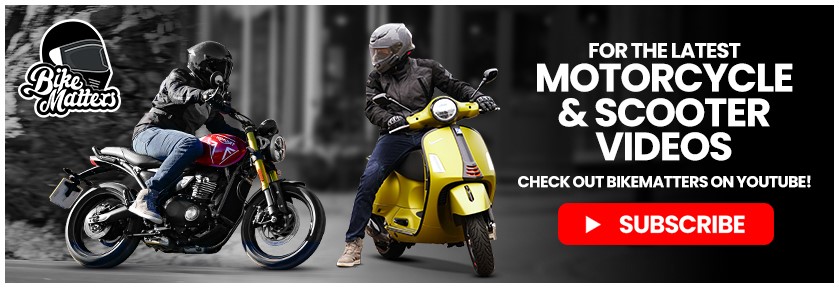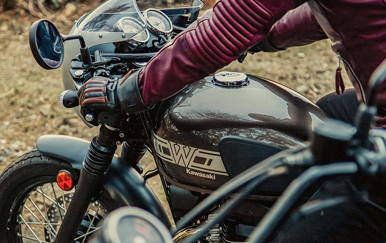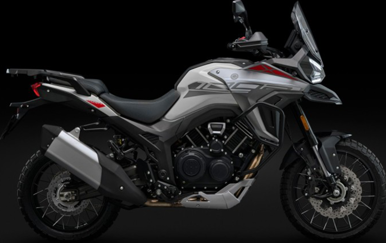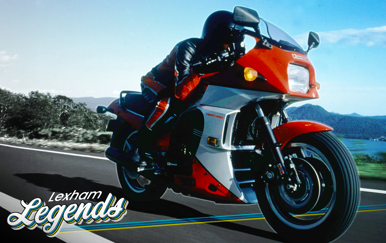Lexham Insurance turns 25 this year and to mark the occasion we decided to look back at 25 of the most iconic motorcycles of that period – one from each year!
The motorcycle industry has been constantly evolving over the last quarter century, with new technology and amazing bikes coming out every year. In fact, we've seen some truly epic motorcycles arrive over that period so picking out just 25 was no easy task.
But we’ve decided to cover as wide a variety as possible, looking at some of the motorcycles that have shaped the direction of modern motorcycling, as well as bikes that have been huge sellers and trendsetters. So, let's get started!
1. 2000 Honda SP-1

Unveiled at the turn of the Millennium, the VTR100SP-1, to give it it’s full designation, was a homologation special racer built for World Superbikes that was arguably just as significant as Honda’s previous 1994 RC45 and 1988 RC30 – even though it struggled to match the reverence (and values) of those V4 predecessors.
Built under the mantra of ‘if you can’t beat them, join them…’ the SP-1 came about following the failure of Honda’s 750cc V4 RC45 to consistently beat Ducati’s dominant 916/996 V-twins. Although on face value a ‘Ducati clone’ in being a 999cc V-twin, in full race trim it was more powerful and achieved its goal by winning the 2000 WSB title in the hands of Colin Edwards first time out. Then, when Troy Bayliss took the 2001 crown for Ducati, Edwards snatched it back for Honda the following year on the updated SP-2.
Soon after, WSB rules were changed allowing four-cylinder 1000s and the years of Ducati’s V-twin dominance were over. As such, the SP-1 (and 2) were the last ‘full blown’ Honda WSB homologation specials and arguably the most delectable machines of all from a super-competitive era… even if they didn’t make great road bikes!
2. 2001 BMW R1150GSA
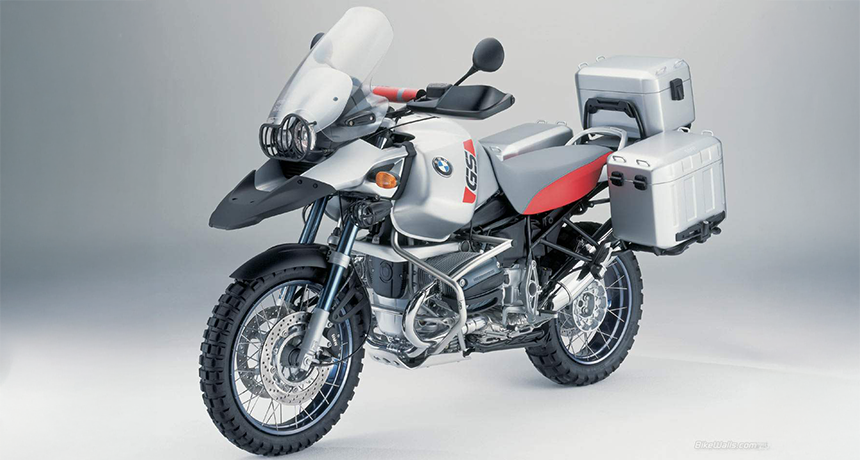
Arguably one of the most successful and influential motorcycles of the modern era. The GSA (with A standing for Adventure) was the big-tanked, more rugged version of BMW’s already popular 1999 R1150GS complete with longer travel suspension and more. As such it followed in the footsteps of previous ‘special’ GSs such as the R100GS Paris-Dakar.
However, the GSA sprang to global prominence when adopted by Ewan MacGregor and Charley Boorman for their televised 2004 ‘Long Way Round’ and when BMW introduced a 1200 successor the following year which coincided with a decline in sports bike sales, the GS/GSA became Britain’s best-seller – and would remain so for the next two decades.
The 1150GSA paved the way for successive 1200, 1250 and, most recently, 1300cc versions, became the benchmark adventure bike increasing numbers of rivals would attempt to beat and remains the iconic original example of the breed.
3. 2002 Aprilia Tuono Fighter

It seems hard to imagine it today, with Aprilia’s Tuono model, now available in 125, 457, 660 and 1100cc forms such an important part of the Italian brand’s range, but the very first Tuono was launched as something of an limited edition experiment.
Unveiled in 2002, the Tuono Fighter (as it was then called) was a more upright, chopped down version of Aprilia’s then V-twin RSV superbike. As a result it had phenomenal performance with upright comfort and extra day -to-day practicality – if in a slightly mad way.
Although only 220 were initially produced, the concept caught on and the Tuono (Italian for thunder, by the way) became an established part of the Aprilia family, particularly since 2012 when it evolved into its current V4 configuration.
4. 2003 KTM 950 Adventure
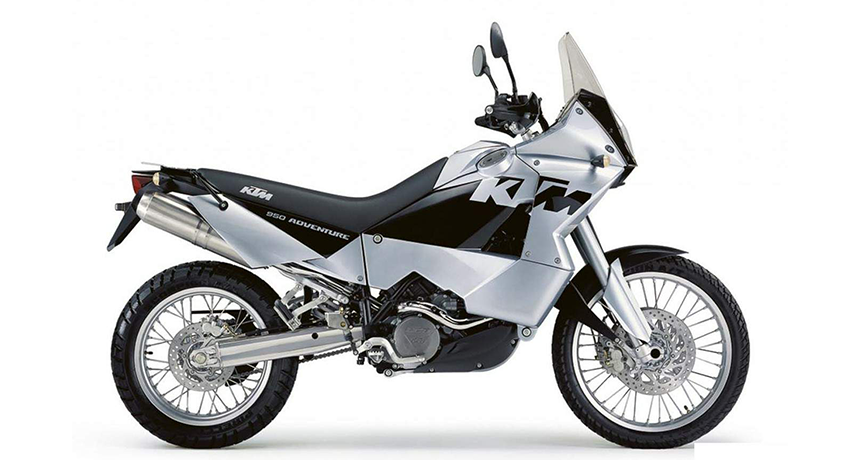
Austrian brand KTM is today such an established part of the big bike landscape that it’s hard to remember the time when it was a specialist off-road manufacturer making enduros and motocrossers up to 600cc.
That started to change with the first Duke in 1994, a 620cc road-based supermoto based on its then enduro platform with the firm then hitting the ‘big time’ with its first 950cc V-twin Adventure at the end of 2003.
With its 942cc, Rotax developed, ‘LC4’ V-twin developing a punchy 102bhp, and with a genuinely off-road capable chassis, the Adventure was an immediate hit and a rival for BMW’s then R1150GS, leading in turn to an uprated 990 version and spinning off a family of similarly powered variants, including the 990 Super Duke and Super Moto.
The successively updated Adventure, however, has remained the spine of KTM’s big bike range with the latest 1390 incarnations boasting 170bhp, class-leading electronics and more off-road ability than many bikes of half the size can manage.
5. 2004 Triumph Rocket III

Nobody saw it coming… and nobody could quite believe it when it arrived.
Triumph’s monster 2294cc three-cylinder Rocket III cruiser land with a massive ‘whump’ in 2004 intended to make waves in the ever-growing big American cruiser market.
As the world’s largest-engined production bike (yet also one with surprisingly good handling and practicality) it was sufficiently successful to survive in Triumph’s range up to 2016. Then, when killed off due to Euro4 it was then comprehensively reinvented in 2019 with an all-new, even larger and more powerful 2458cc/167bhp triple, a lighter, better chassis and sophisticated electronics.
This version has since been updated as the Storm (now with 180bhp) but don’t let all that put you off. Despite its big numbers, the Rocket3 is a big pussy cat, more manageable than most think and a conversation piece like no other…
6. 2005 Triumph Speed Triple 1050
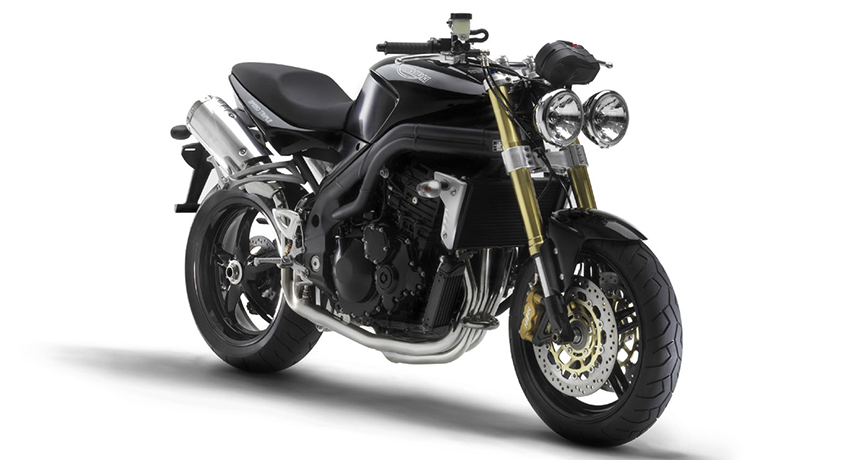
If it’s starting to look like there’s more than a few Triumphs in the list it’s with good reason – in the early 2000s the revived, Hinckley-based, British marque was on a roll, not only coming up with the bold Rocket III (above) but, the following year, reinventing and nailing its Speed Triple.
Now a standalone supernaked (previous ‘Speedies’ were naked spin-offs of Daytona sports models), the new 1050 had a new engine, uprated more aggressive styling and more nimble handling.
It was also a big hit and became not only the backbone of Hinckley’s range but also the benchmark super naked for its combination of performance, three cylinder character, sweet road handling and just the right mix of equipment and value.
Updated successively since, the Speed Triple remains Triumph’s ‘signature’ machine.
7. 2006 Ducati Paul Smart LE
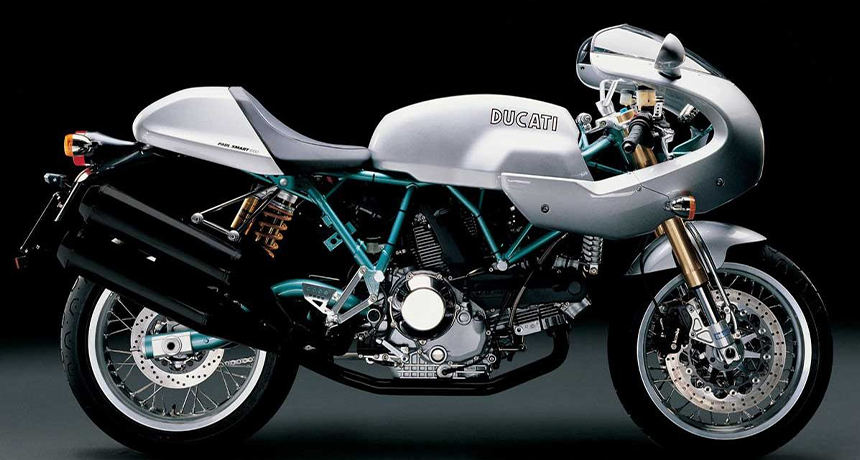
Most motorcycling experts will concede that Ducati was somewhat ‘ahead of the game’ when it unveiled its ‘Sport Classic’ retro family.
Designed by Pierre Terblanche and developed from his MHe900 concept bike, which was a ‘retromod’ reimagining of Mike Hailwood’s legendary 1978 TT winning machine but based around modern 900SS mechanicals, the three members comprised the Sport 1000 (inspired by the 1973 Sport 750), the following year’s GT1000 (inspired by the 1972 GT750) and the flagship, top spec, limited edition Paul Smart, as inspired by the British racer’s legendary 1972 Imola 200 winner.
In truth, although all three were gorgeous and capable, none were commercially successful, leading to the Sport Classic family being dropped in 2010, just as the whole ‘retro’ fashion took off. The Sport was deemed uncomfortable and, with no pillion, impractical; the Ohlins-equipped LE was expensive and the GT was the worst-looking of the three.
Today, however, they represent a ‘sea-change’ moment in motorcycling fashion and are collectable modern classics in their own right with the values to match…
8. 2007 Triumph Street Triple 675
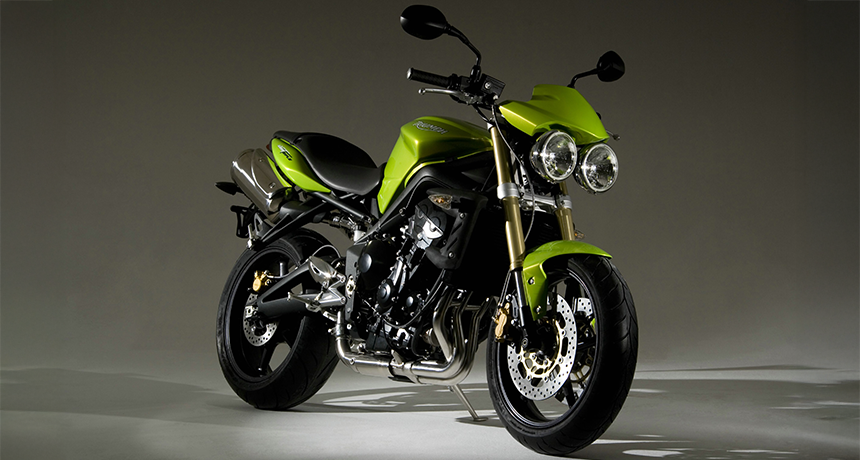
Following 2006’s all-new Daytona 675 supersports, Triumph following its previous model with the Speed Triple by launching a ‘naked’ version the followed year and called, somewhat predictably, the Street Triple.
It was a huge success – and remains a British best seller, now in enlarged 765cc form, to this day.
With hindsight the reasons are obvious: while the Daytona was launched into a by-then dwindling supersports market, its three cylinder engine was distinctive and flexible while its handling and manageability was excellent – both features which are even more compelling in a roadster format.
It also shared the Speed Triple’s twin headlight ‘bug-eye styling, was affordable and appealed to a broad range of bikes varying from first big bike newbies to experienced types wanting a ‘thrashable’ roadster.
9. 2008 Yamaha YZF-R1
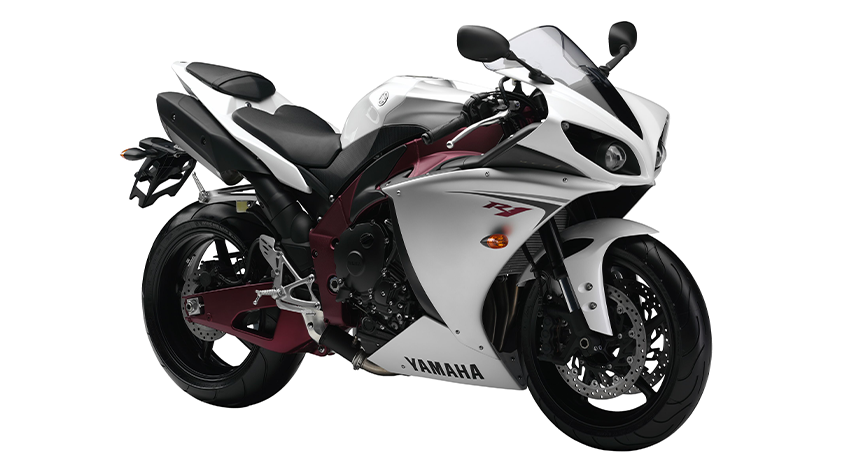
Although by 2008 Yamaha’s R1 had been around for a decade, that year’s all-new version, unveiled at the end of that year to go on sale the following year, was a true game-changer in being the first production sports bike to feature what had become called a ‘crossplane’ crankshaft, as developed with Valentino Rossi in MotoGP.
With its crank pins set at 90° intervals, the engine had an uneven firing order leading to a unique power delivery, similar to a 90° V4 and matching distinctive exhaust sound. The result had tremendous grunty drive out of corners couple with an impressive top-end and sound like a Ducati and a new star was born.
The configuration was also at the heart of Yamaha’s later, game-changing ‘MT’ (Masters of Torque) family and a super naked version, the MT-10, from 2015.
10. 2009 BMW S1000RR
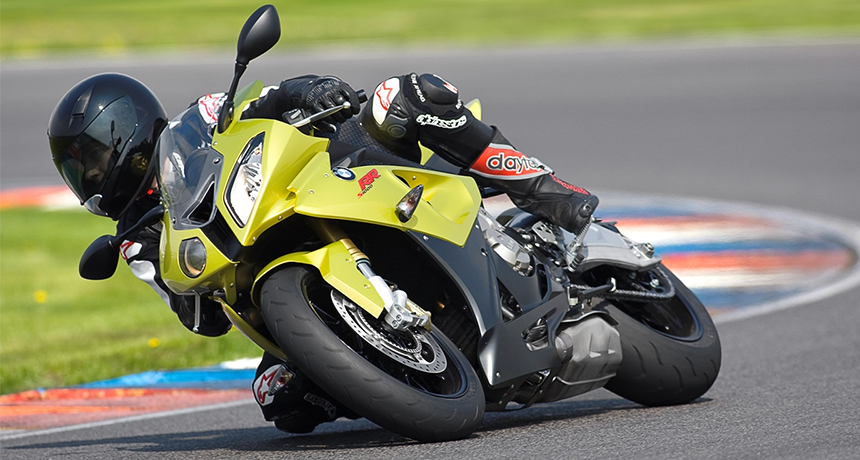
Up to 2009, if you wanted a big power, four-cylinder superbike your choice was exclusively Japanese. That year, however, saw the arrival of not only Aprilia’s electronics-laden (but exclusive) V4 RSV4 but also, even more surprisingly, the S1000RR from BMW.
With not only monster power but also next generation electronic rider aids including dynamic traction control, the S1000RR was not only more powerful than its Japanese rivals but also a match for its Italian ones in terms of electronics and cycle parts and yet also with a level of road practicality and BMW allure few others could match.
Although not a winner in WSB until recently, the big BM remains the go-to TT racer and one of the very best road-going superbikes, something incomprehensible of BMW back in the early 2000s.
11. 2010 Ducati Multistrada 1200S
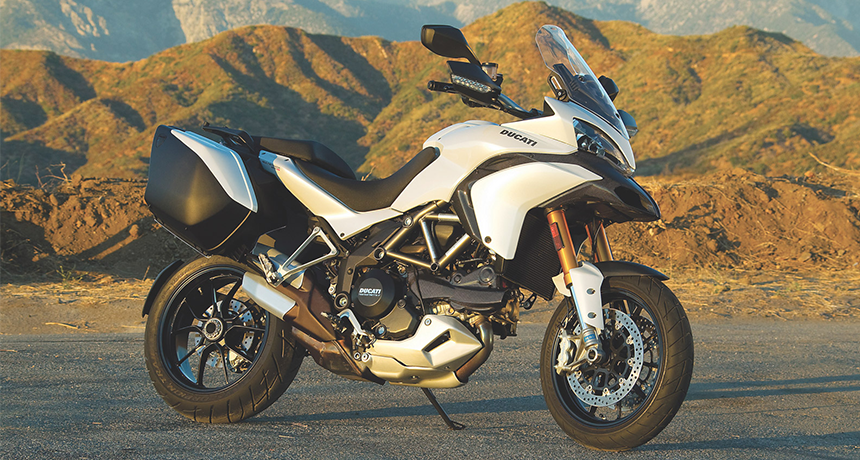
What a difference seven years makes. The original Multistrada was first introduced in 2003 as a 992cc dual-sport, although its true intended purpose was as a road bike rather than an off-road adventurer, the name literally translating as ''many roads''.
But the Multistrada really came into its own in 2010 with the release of the Multistrada 1200. Now featuring Ducati's Testastretta 11° engine and bumped up to 1198cc displacement, one of the main things to note was the introduction of a huge amount of technology and sophisticated features.
It sported multiple ride modes, electronically adjustable suspension, fully adjustable traction control, ride by wire and a host of others. These are things most top-of-the-line deluxe models come with now but back in 2010 it was a first in a production model.
12. 2011 BMW K1600GT
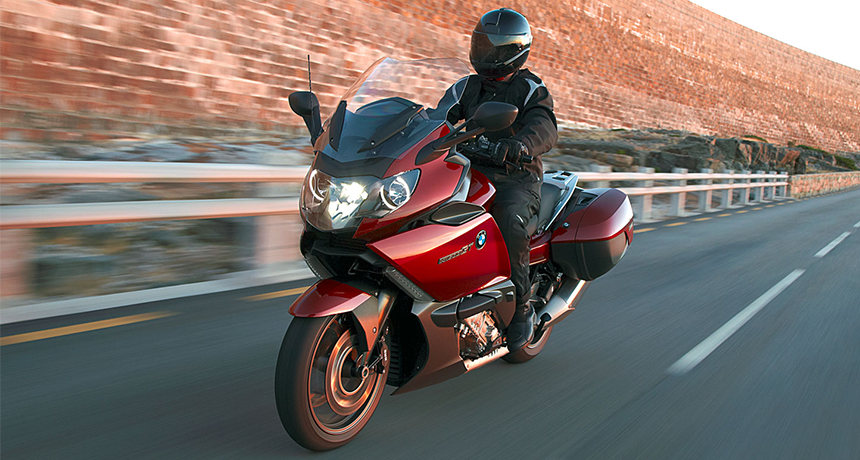
Yes – BMW again, but we couldn’t ignore the simply stupendous, six-cylinder K1600GT.
As one of only two six cylinder motorcycles currently in mass production (with the other being the far more dowdy, 125bhp Honda Gold Wing), the straight six, 160bhp K16 is a true motorcycling wonder. Yes, it’s a full dress tourer with its top speed capped at 155mph, but nothing gets there so smoothly and impressively. Few bikes give such a thrill with just a turn of the throttle.
The K16’s also an impressive handler, which is no mean feat considering its width and sheer size. While last, but my no means least, it’s also lavished in comfort and luxury with sound systems, electric screens and one of motorcycling’s first TFT dashes all there to pamper you.
Oh, and if all that’s no enough, there’s the even more lavish GTL version available, too!
13. 2012 Ducati Panigale 1199

Just when we thought Desmodromic V-twins had run their course as superbikes, in 2012 Ducati came up with the ultimate – the Superquadro-powered Panigale.
It’s ultra short-stroke, ‘oversquare’ configuration saw pistons with a bore of 112mm but a high revving short stroke of just 60.8mm resulting in peak power of a boggling 195bhp (the original 916 produced just 112) – but it wasn’t just the engine that moved things to another level. Out went the traditional tubular steel type trellis frame in favour of an aluminium monocoque while it also got a whole new suite of electronics and the very best in cycle parts.
And yet… although the ultimate V-twin Ducati it still wasn’t quite enough to beat the fours of Kawasaki and Aprilia and, despite even a capacity hike to 1299 Ducati would have to wait until its new V4 to reclaim the world superbike crown. Still some kind of ultimate, though…
14. 2013 BMW R1200GS
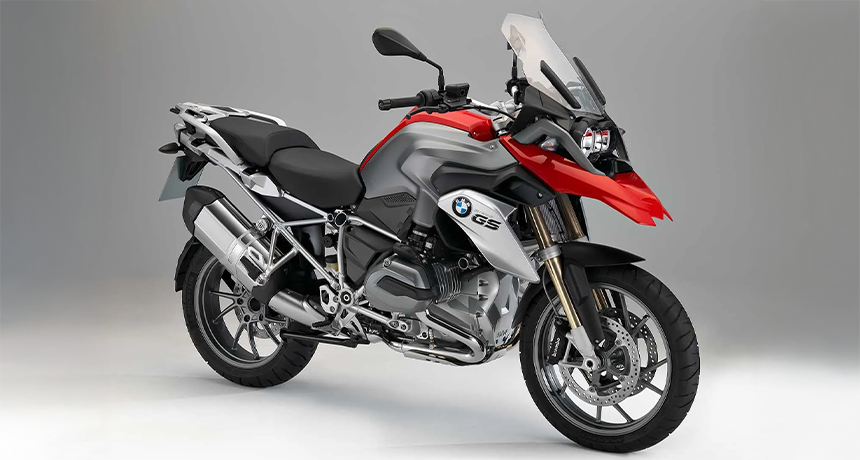
By 2012, the long-reigning, boxer-powered R1200GS had well and truly established itself as the benchmark adventure bike – then in 2013 BMW raised the bar yet again (which was unfortunate for rivals Triumph as its all-new Tiger 1200 had been designed to beat the old one).
The all-new 2013 1200GS may have shared the same name as its predecessor but everything else was all-new. A new engine featured partial liquid-cooling, increased peak power from 110 to 125bhp, featured new electronics and a ‘Canbus’ wiring loom and even the Paralever single-sided shaft drive unit was shifted to the other side.
It worked brilliantly, too, so much so that, when its Adventure sibling joined it the following year, the pair remained UK best sellers for the next five years…
15. 2014 Yamaha MT-09
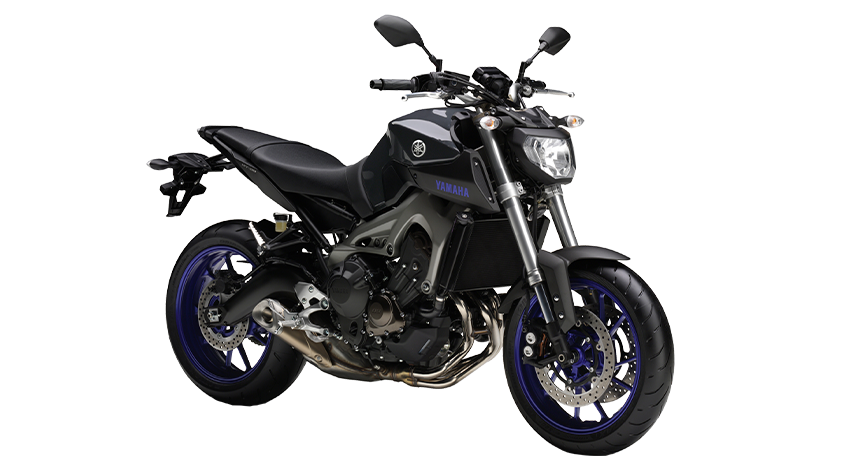
Arguably the most significant motorcycle of the last two decades, the MT-09 (after years of Yamaha dormancy, it has to be said) completely rejuvenated the Japanese marque with its success (and modular format) setting the template for most of Yamaha’s models which have followed.
The key elements were: grunty, flexible and entertaining three-cylinder engine; sporty roadster chassis and, crucially an affordable price. The result was massive sales; the MT-07 twin spin-off plus inspired variants including the Tracer, XSR and GP.
Those first MT-09s, 10 years on, seem a little crude and oddly styled. Continual evolution, restyling and added spec have, however, kept the MT-09 of top, even in the face of ever-fiercer competition.
16. 2015 Ducati Scrambler
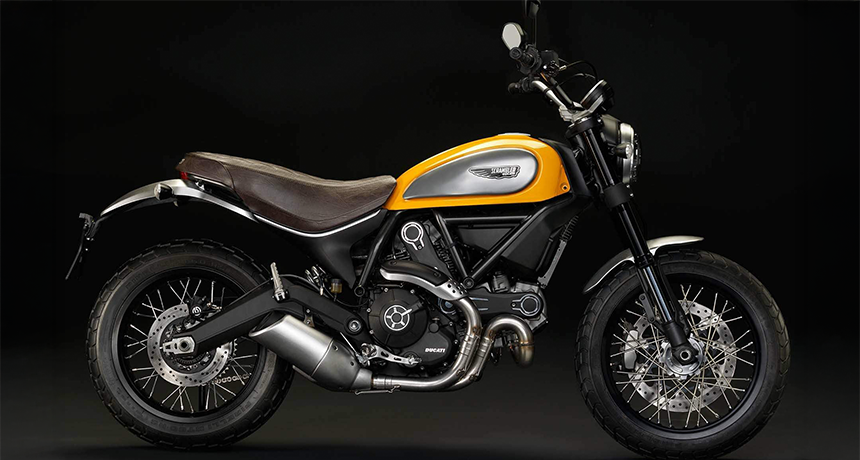
Ducati first unveiled the Scrambler in 2014 and it immediately became one of their top-selling bikes, helping to define an entire genre in the process – the neo-retro.
Despite the name and large spoked wheels, the Scrambler was intended to be an urban street bike and quickly became the choice of hipsters everywhere.
Ducati had a few clever ideas to ensure it would catch on, apart from its killer aesthetics. Firstly, the bike's relatively mellow power delivery from the 75bhp 800cc engine made it a perfect bike for beginners, while still satisfying more experienced riders. It also launched with a very attractive price tag.
Usually, having a Ducati badge on your tank will cost you a tidy sum but even in 2025, you can have one of these lovely designer motorcycles for less than £10k- Is there any wonder this bad boy features on our top 10 scramblers list too?
17. 2016 Triumph Bonneville Thruxton
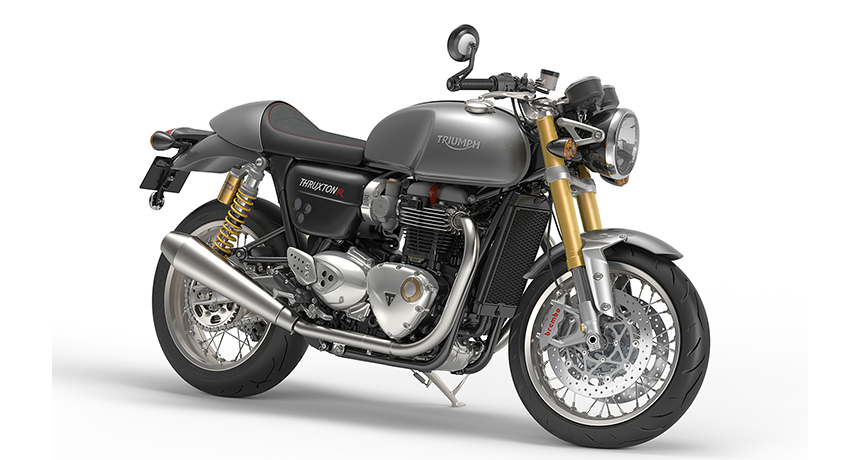
While it’s fair to say Triumph’s original revived Bonneville, the 800, largely set the retro roadster trend rolling way back in 2000, it’s equally true that the all-new enlarged and much improved version from 2016 is more significant still for remaining – as an expanded family of bikes – the retro bikes to beat.
The first and arguably best of these was the Thruxton 1200, a 90+bhp café racer that had the handling to match it performance, the best looks of the bunch and the option of a higher spec ‘R’ version with Ohlins suspension, Brembo brakes and more.
But if that wasn’t to your taste there were plenty of others, not just the traditional T120 Bonneville, but a Scrambler, later a Bobber plus a whole family of smaller 900cc versions for those with less experience/money. All remain at the top of the category to this day.
18. 2017 Kawasaki Z900RS
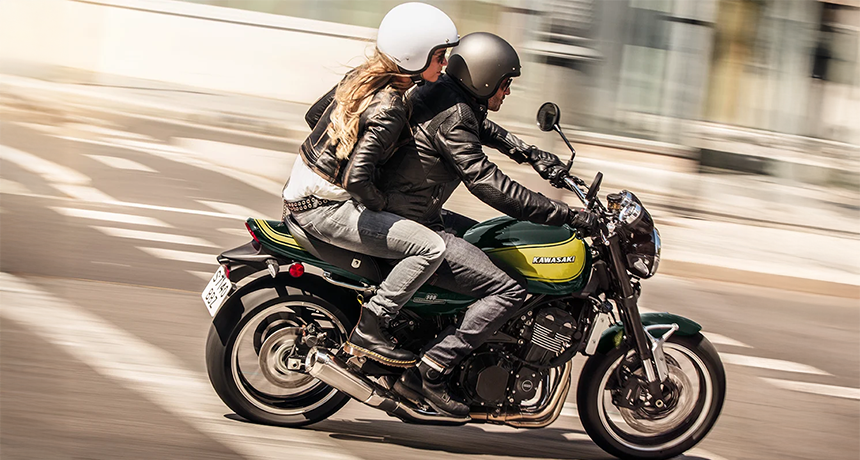
The significance of ‘retro’ bikes even spread as far as the Japanese in 2017 with this beautiful re-imaging by Kawasaki of its iconic 1973 Z1 900.
Based on the (confusingly named) Z900 roadster, additional fake engine ‘cooling’ fins, authentic looking ‘70s bodywork and twin chrome ringed dials provided a convincing 1970s look while modern mechanicals delivered 2010s performance, handling and braking.
As such, the RS was a huge hit and if that didn’t appeal, Kawasaki later followed it up with a half-faired café racer version and a smaller, cheaper 1976 Z650 reincarnation based on the ER6n twin.
19. 2018 Royal Enfield 650 Interceptor
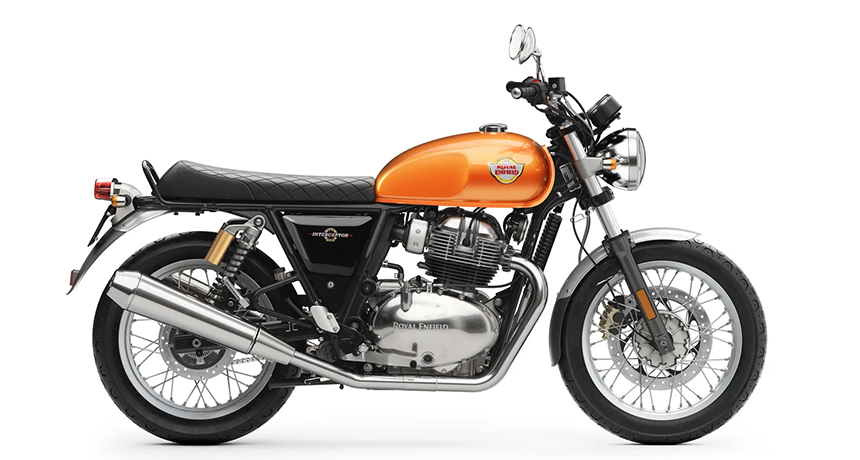
As proven first by Triumph, then by Kawasaki (above) and others, affordable, versatile, easy-to-ride and good-looking retro roadsters proved a big hit in the late 2010s but none were more successful than Royal Enfield’s all-new 2018 twin cylinder 650 duo, the café racer Continental GT and, here, the roadster Interceptor.
A revival of the vintage Interceptor produced from 1960-70, with a completely new design. It still carries RE's philosophy of creating affordable classic-themed bikes, but the new 648cc parallel-twin engine raises the performance quite substantially to 47bhp. This is still A2-friendly and makes for a perfect beginner bike, but it now has all the power you would need for riding on UK roads.
One of the biggest things to mention here is the cost. Starting at under £6K, the value for money is exceptional and it became Britain's biggest-selling large capacity motorcycle in 2020! Freshly updated for Euro 5, along with its Cafe Racer-themed twin the Continental GT, the Interceptor 650 is still a big seller today.
20. 2019 Yamaha 700 Ténéré
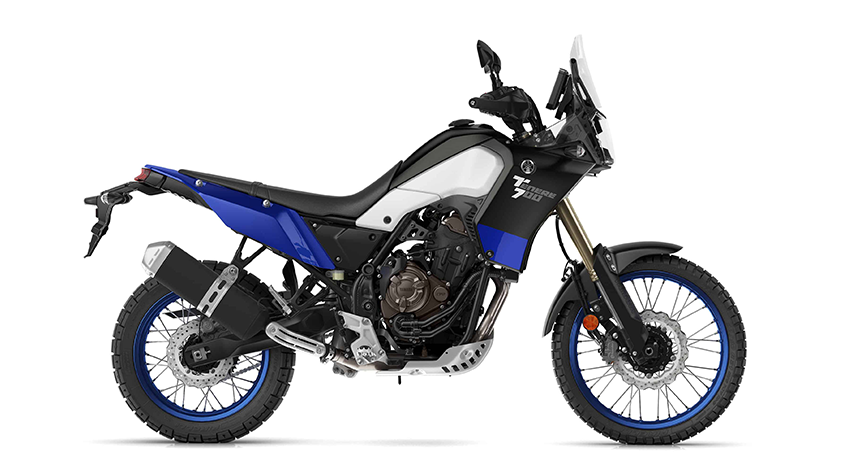 While Yamaha’s new Crossplane crank engined ‘Masters of Torque’ family of affordable, modular roadsters (starting with 2014’s MT-09 triple before 2015’s MT-07 twin) proved a huge success and spawned a variety of offshoots included the sports-tourer Tracer and XSR retro, the most successful and significant variant of the MT-07 of all was probably the Ténéré 700 adventure bike.
While Yamaha’s new Crossplane crank engined ‘Masters of Torque’ family of affordable, modular roadsters (starting with 2014’s MT-09 triple before 2015’s MT-07 twin) proved a huge success and spawned a variety of offshoots included the sports-tourer Tracer and XSR retro, the most successful and significant variant of the MT-07 of all was probably the Ténéré 700 adventure bike.
Launched in 2019 it used the punchy MT-07 70bhp twin in a credible off-road chassis dressed in authentic Ténéré adventure bike clothing. The result was a brilliant dual-purpose bike at under £10K that proved so popular it not only spawned a family of Ténéré variants but it arguably kick-started a whole fashion for ‘middleweight adventure bikes’ including machines like Honda’s revived 750 Transalp, that are proving popular alternatives to no-expensive litre-class versions.
21. 2020 BMW R18
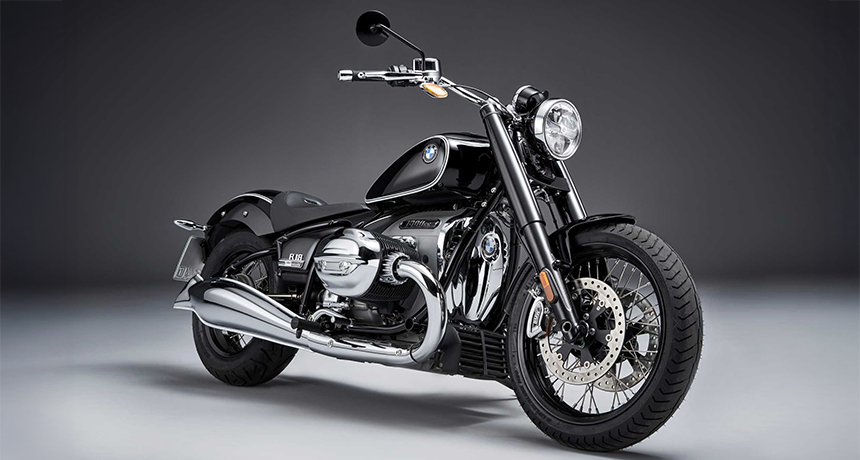
You’ve got to admire BMW’s ambition in producing the R 18. A US-style heavyweight cruiser aimed squarely at Harley-Davidson in America it stands out for its all-new, 1800cc air-cooled boxer twin, glorious retro styling and typically BMW build quality.
It works well, too and BMW quickly followed it up with a whole family of variants including the bagger R18B, outing R18 Classic and full-dresser Transcontinental.
On the slight downside, if you’re after a US style cruiser, why would you buy a German one? Which is a bit like Harley-Davidson producing a BMW-style adventure bike, which, ironically, is exactly what it has done, with its Pan America 1250. Oh well…
22. 2021 Ducati Multistrada V4
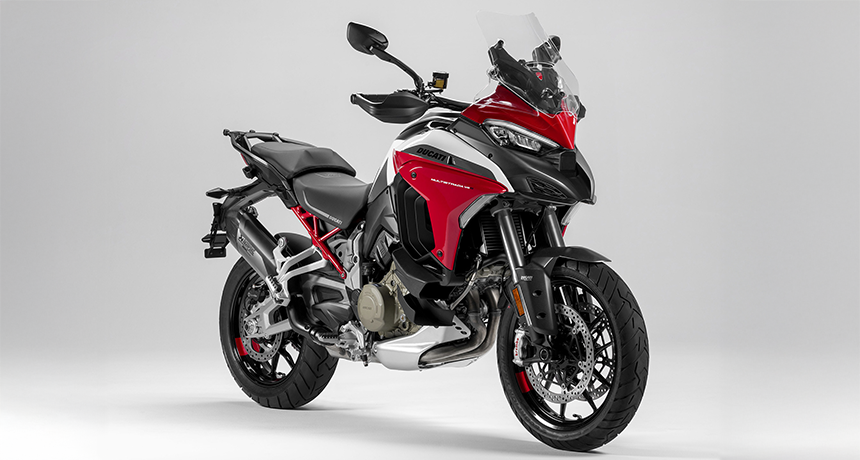
It was tempting to include Ducati’s first V4, the 2018 Panigale, here, such was the revolution it represented. But the succeeding 2021 adventure successor to the V-twin Multistrada is arguably more significant still.
Far from being a Multistrada with a Panigale V4 engine, it instead gets its own ‘Granturismo’ version of the V4 which forfeits traditional Desmodromics for conventional cams for a smooth, more flexible deliver. Not that, with 170bhp, it’s remotely short of power or, with the latest electronics including radar (the first to be so equipped) and adjustable everything anything else really.
The result is arguably peerlessly able, was improved further for 2025, there are Rally and Grand Tourer versions and if you want the most capable, classy and potent all-rounder of all, this, probably, is it.
23. 2022 Moto Guzzi V100 Mandello
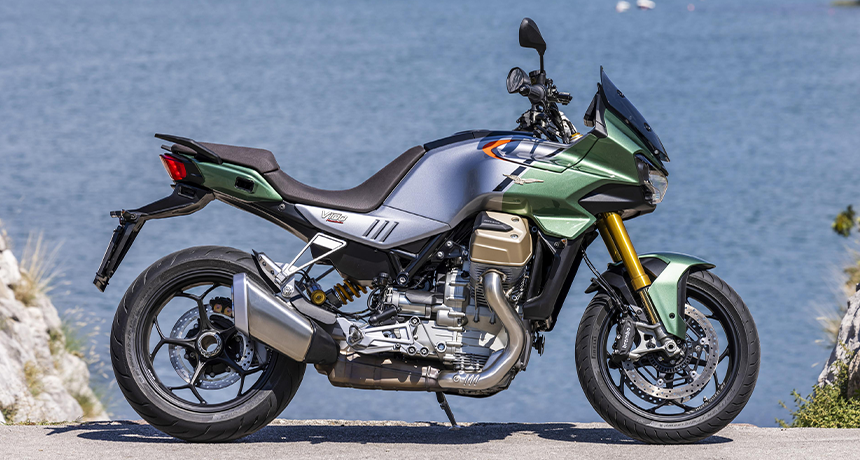
It’s difficult not to love the ‘Grand Dame of Italian Motorcycling’ but it’s also too often difficult to love their quirky and usually old fashioned V-twins, too.
That changed with the 2022 V100 Mandello. An all-new bike (Guzzi’s first in decades) built to celebrate Guzzi’s 100th anniversary in 2021 (yes, it was a year out due to the Covid pandemic) it was truly modern with 110bhp+, cleverly rotated cylinders (so the exhaust and intake routing now actually made sense), electronics including active aero and more.
Nest of all, though, it’s also handsome, potent - yet still characterful as only a Guzzi can be.
24. 2023 BMW R1300GS
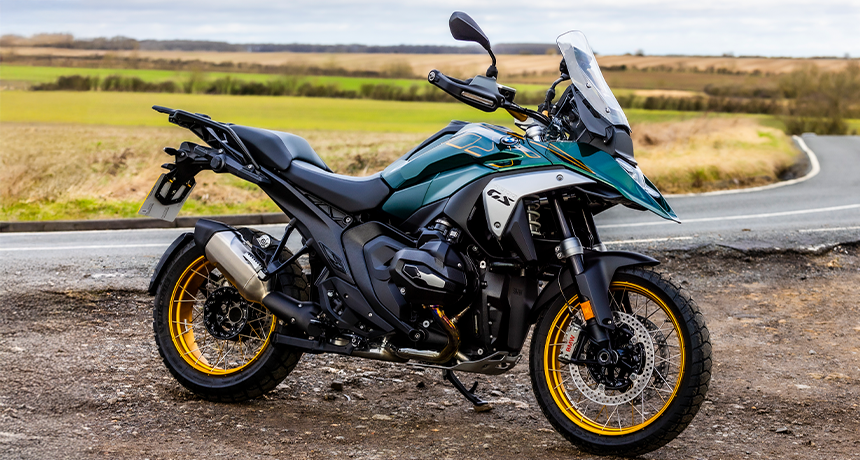
All-new GSs don’t come around very often (the last being, above, back in 2013) so the 1300 was big news: not only larger than ever before but more potent (with 145bhp compared to the outgoing 1250’s 136), lighter, more nimble and with a far greater array of clever electronic riding aids (including radar and automatic ride-height adjust) than ever.
It all works brilliantly well, too, proving brisker, more engaging and more intuitive.
A big-tanked Adventure version followed, which arguably proved better still while both now are also available with BMW’s clever new semi-automatic ‘ASA’ (Automatic Shift Assist) which is another significant step forward.
25. 2024 Yamaha XSR900SP
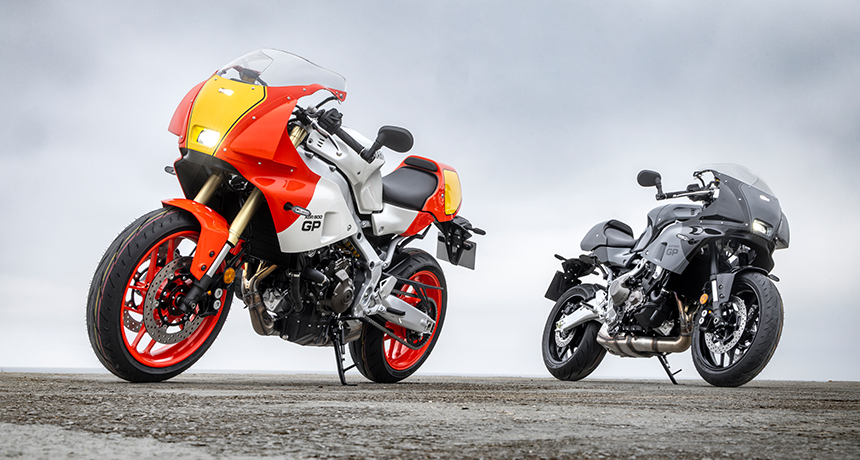
Just when we thought Yamaha couldn’t come up with any more (or better) variants of its hugely successful MT-09 roadster triple (there is already the Tracer sports-tourer, XSR retro and Niken three-wheeler) the Japanese giant launch in 2024 the XSR900GP, a glorious retro café racer/sportster with styling inspired by a mélange of ‘80s Yamaha GP racing.
With the base MT-09 triple engine and fine-handling Deltabox chassis so good, the GP could hardly fail – and it doesn’t. But it’s the detailing and road relevance of its performance which lifts it to another level.
The GP isn’t perfect – it’s styling, for my taste, is a little bit of a mash-up and Yamaha’s latest flasher switch annoys – but it’s a mouth-watering evocation of how brilliant motorcycles in 2025 can be.

